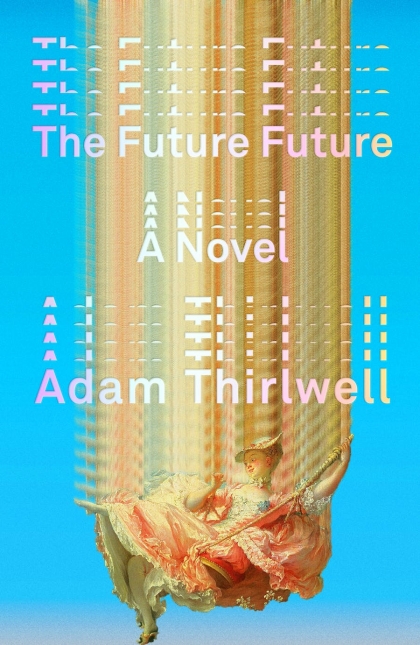The Future Future: A Novel
- By Adam Thirlwell
- Farrar, Straus and Giroux
- 352 pp.
- Reviewed by Marcie Geffner
- November 9, 2023
This genre-spanning story will delight trippy-tale lovers.

Adam Thirlwell’s The Future Future might best be described as imaginative, original, fantastical, and puzzling — as anyone familiar with the author’s previous works, including the novels Lurid & Cute, The Escape, and Politics, might expect.
The story concerns Celine, a 19-year-old woman in 18th-century Paris. She’s newly married to Sasha, who is 46, the city’s chief minister’s personal secretary, and a “minor but murderous fascist.”
Celine’s life has been the subject of a series of pornographic pamphlets written by men and printed in the avant-garde cities of London, Antwerp, and Geneva. Though the pamphlets are fiction, their contents and the unauthorized use of Celine’s name are understandably distressing, even terrifying for her. This problem is soon resolved (temporarily) but stirs in Celine a new and profound interest in power, communication, and the written word.
Abused and abandoned by Sasha, Celine hosts a series of parties that elevate her social status and make her someone the important people in Paris want to know. Among her guests are a great many writers and newcomers to the city, which is on the edge of the French Revolution. The political unrest proves jarring:
“The old systems were dying out but Celine felt that there was nothing to take their place. So people were running in many directions at once. Some people chose timelessness, and these were the artists. Some people wanted power, and these were bankers or politicians. Others wanted the future, and these were visionaries. Whereas the move she wanted to make was to inhabit the present moment as urgently as possible.”
The anachronisms — bestsellers, billionaires, taxicabs, trash talking — that Thirlwell drops into his story will make readers feel as off-balance and unmoored as Celine. In this world, Marie Antoinette is not only about to become France’s queen, she’s also an actress who participates in a script-reading at one of Celine’s parties.
The reading connects “Antoinette” with Rosen, Celine’s preferred — and ultimately successful — candidate for the city’s new chief minister. Several of the book’s antisemitic remarks take the form of gossip about whether Rosen is or isn’t Jewish. Thirlwell likes the idea that art can be shocking.
Fascinatingly weird props, including a “small, but deadly” fishhook and a “giant pale green ice cream” that Celine receives as gifts; a “damaged cactus” left behind a watering can; and a toad “throbbing hysterically, like a terrified heart” fuel the sense of bewilderment. So, too, does the title of the rejected script that brings Rosen into Antoinette’s circle: “The Useless Precaution.”
While Celine is the novel’s main character, its narrative voice isn’t hers. Instead, her experiences, thoughts, and feelings are filtered through an unidentified narrator who — like much of the characters’ dialogue — employs present-day diction and slang, which adds to the disorienting effect of a story that seems to be happening then and now.
The narrator explains the book’s title:
“The true future wasn’t what was about to happen in a month or even in a year but the future future, said [Celine’s daughter] Saratoga: alien and incommunicable. But [the writers] never saw it, because they couldn’t think that wildly.”
Celine’s circle of friends expands and then contracts as the Revolution sweeps through Paris and Napoleon — no great friend to Celine or her compatriots — seizes power. Without allies or money, and forewarned to leave before she’s killed, Celine flees to Boston and then Philadelphia. There, she’s introduced to a new crowd of writers in exile.
One of Rosen’s pet projects is to secretly supply rifles through a shell company to the “guerrillas” in America for their own war of liberation. This effort spins into a confusing subplot that concerns George Washington, Louis Cook, an interpreter named Montour, and a tribe of Mohawks. Montour’s daughter, Catherine, befriends Celine, who has been separated from Saratoga.
And then, Celine takes a trip to…wait for it…the moon.
What on earth does it all mean?
The answer lies within the novel’s themes. Sentiments surrounding political power; the decline of the written word; the breakdown of civilized society; glitches in communication; men and women; what men want from women; war; and liberation are woven throughout the book, starting with the pornographic pamphlets on page one and ending in the strange green forest that forms the closing image of Celine.
It’s a lot, but readers willing to think wildly will luxuriate in this unusual and subversive tale.
Marcie Geffner is a writer, editor, and book reviewer in Ventura, California.

